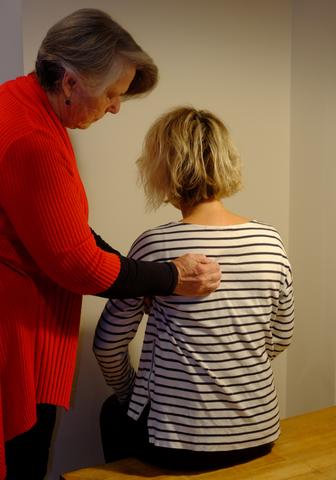Working Posture and choosing a working seat

By Dr Penelope Jones of Working Posture
How much does the dental team spend on therapy and medication and still the literature is full of articles confirming up to 80% of dentists have problems in their bodies from work?
As a retired endodontist and four year trained Feldenkrais practitioner who has been teaching how to reverse and prevent the usual problems that the dental team face for over 25 years, I see their problems from a deeper perspective. The issue is twofold:
-
People don’t know how to use their bodies efficiently
-
People don’t know to choose a seat that allows for efficient functioning of their bodies
 When you concentrate or need to perform intricate work, have you ever noticed that you tend to reduce your breathing? As you are unaware of it, as time goes by your intercostal muscles and diaphragm become tighter. Do this all day and along with other silly habits like raising your shoulders, rolling your pelvis back your body gets tighter and tighter.
When you concentrate or need to perform intricate work, have you ever noticed that you tend to reduce your breathing? As you are unaware of it, as time goes by your intercostal muscles and diaphragm become tighter. Do this all day and along with other silly habits like raising your shoulders, rolling your pelvis back your body gets tighter and tighter.
At the end of the day this chronic tightness leaves you feeling literally uptight and eventually leads to pain. Posture is not a static thing. Good posture is where the nervous system is unhampered by the above-mentioned tightness, and is free to delicately organise muscles to pull the skeleton into alignment so that the forces of gravity and the work we are doing get taken by the skeleton (which its strong enough to do this).
Our nervous system also needs be aware of when we are out of alignment so that it can again realign us. A tight body becomes numb and the poor nervous system doesn’t know you are out of alignment, so doesn’t know how to bring you back again.
We need to stop thinking that to do our fine dental work that we should lock ourselves into a rigid position and stay there for long periods.
We need to understand that posture is a fluid constant adjustment of all of our muscles to come back again and again to balance and alignment. Locking into one position leads to rigidity and pain but the latter can lead to a state of STABILITY WITH FLEXIBILITY.
We were built to move. And in our work these become micro-movements and serve us better than a tight body.
Working Posture can show you how to find that alignment. It has to be taught from the inside not from pictures. When you know what it feels like you can then translate that into moving to whatever position you need to work from.
In a Working Posture workshop you’ll not only find out how to use your pelvis to align your spine in all necessary movements, you’ll be shown how to properly use your core, how to do spiral movement and to undo all those tight muscles.
You must choose a chair that will allow free movement of the pelvis in all directions otherwise you’ll lock your pelvis and thence the rest of your body into rigidity.
I personally prefer a good quality saddle chair for these reasons:
- You have free movement of your pelvis in all directions – leading to being able to more easily align your spine and skeleton whatever position you need to work in
- A flat or even sloped flat seat does not allow you to rock pelvis side to side -this movement is very important for spiral movement (allows turning and reaching)
- It allows for hips joints to be more open (working higher with hip angle almost as in standing) this makes it harder for your pelvis to roll backwards (rolling back is what creates so many back and neck problems)
- Flat chairs even ones with extra padding can cramp the hamstrings and cause the pelvis to roll back – not a problem with saddle chairs
- A cheap saddle chair does not have the engineering quality needed for all the above
Dr Jones has been teaching Working Posture for over 25 years with the Sydney dental faculty, the ADA and at universities in Dubai and Bristol and in Edinburgh.
https://www.adansw.com.au/CPD/podcasts/dentalpractitioner.aspx
See www.workingposture.com.au drpenelopejones@workingposture.com.au







